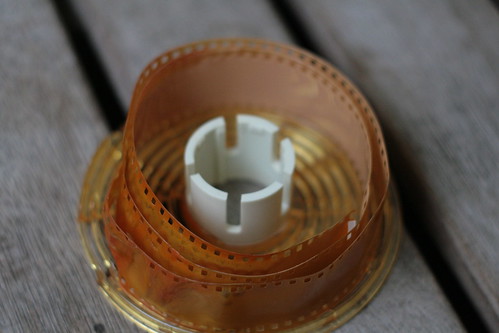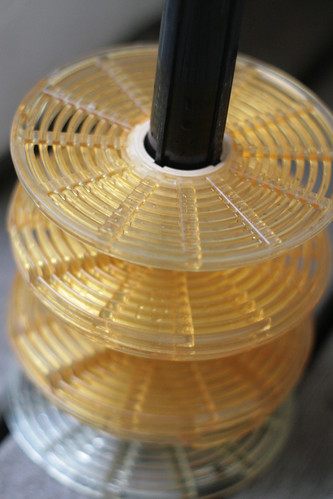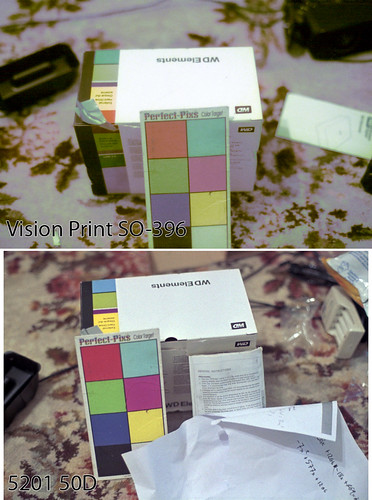Disclaimer: Needless to say Bromine, especially gas/vapour/fumes etc (and other halogens) is very dangerous. Don't do what I do.
So I pulled film out of the bromine gassing area into light, and then gassed it again to bleach away light induced fog, 'cept I left it in there for over a week to let the bromine escape and dissipate completely..
Anyway, the reels I used in the tank (apart from bottom one, which was touching acidic+oxidising solution) have bromine deposits, as did the film.. which was kinda half melted somehow. Awesome!
I'll try bromine chlorine first.. as it's a gas at the working temps I use, rather than bromine which has a boiling point of 58.8 C (above my working temps, hence it will deposit back onto surfaces at room temp). Though I'd love to try Iodine bleaching as a method of not only removing fog, but restoring ancient film to full speed, and even increasing speed depending on iodide content already in the film.

My Theory On Gas Bleaching:
My theory with gas bleaching is that I can rehalogenate silver to silver halide with a gas bleach.
You can do this in solution with a bleach, but this will wash out sensitising dyes, anti-halation layer, and other things, which reduces film speed and film spectral sensitivity.
With gas bleaching, that stuff stays where it is, hence you can potentially recover full film speed, or even potentially increase film speed of both b&w and colour film that has been fogged due to age, or film that has been pulled out in the light.
You could go so far as to leave film out in the sun to reduce to finer silver grains, and gas bleach back to silver halide, for a much finer grained (and very high resolution!) slow speed high contrast film - this can be applied to colour films too!
It doesn't take much halogen gas at all, so it can be performed in a film tank easily to sit in a small amount of gas, bleaching goes by very fast from what I can see.
More testing is needed.




